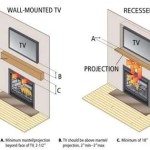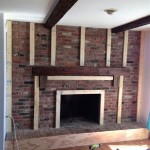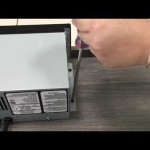Gas Fireplace Specifications: A Comprehensive Overview
Gas fireplaces offer a convenient and efficient alternative to traditional wood-burning fireplaces. Understanding the specifications associated with these appliances is crucial for selecting the right model for a particular space and ensuring safe and optimal performance. This article provides a detailed overview of key gas fireplace specifications, encompassing aspects from heating capacity to venting requirements.
Heating Capacity and Efficiency
The heating capacity of a gas fireplace is typically measured in British Thermal Units (BTUs). BTU rating indicates the amount of heat the fireplace can generate per hour. Higher BTU ratings are suitable for larger spaces, while lower ratings are appropriate for smaller rooms. It is important to accurately assess the square footage of the area to be heated and choose a fireplace with a BTU rating that aligns with those requirements. An undersized fireplace will struggle to adequately heat the space, while an oversized unit may lead to overheating and inefficient energy consumption.
Efficiency is another crucial specification to consider. Gas fireplace efficiency is generally expressed as a percentage, reflecting the proportion of fuel energy that is converted into usable heat. Direct vent fireplaces tend to have higher efficiency ratings compared to vent-free models. Look for models with high efficiency ratings to minimize energy waste and reduce heating costs. Consider that higher efficiency typically translates to lower operational costs over the lifespan of the fireplace, offsetting any potential higher initial investment.
Furthermore, the heating capacity must be considered in conjunction with the fireplace's turndown ratio. The turndown ratio refers to the difference between the fireplace's maximum and minimum BTU output. A wider turndown ratio allows for more precise temperature control and a more consistent heating experience, especially in milder weather conditions when less heat is required.
Venting Requirements
Venting is a critical aspect of gas fireplace installation and operation. Different gas fireplace models have different venting requirements, and selecting the appropriate venting system is essential for safety and performance. There are primarily three types of gas fireplace venting systems: direct vent, B-vent, and vent-free.
Direct vent fireplaces utilize a sealed combustion system that draws air from outside the home for combustion and expels exhaust gases directly outdoors through a coaxial or concentric vent pipe. This type of venting is generally considered the safest and most efficient option, as it prevents indoor air from being used for combustion and eliminates the risk of carbon monoxide leakage. Direct vent systems can be vented horizontally or vertically, providing flexibility in installation.
B-vent fireplaces, also known as natural vent or conventional vent fireplaces, rely on natural draft to exhaust combustion gases through a vertical vent pipe that extends up through the roof. These fireplaces require a suitable chimney or vent that meets specific height and diameter requirements. B-vent systems are generally less efficient than direct vent systems due to heat loss through the vent pipe.
Vent-free fireplaces do not require any venting. They burn fuel very cleanly, producing minimal amounts of carbon monoxide and other pollutants. However, vent-free fireplaces are subject to certain regulations and restrictions, as they release combustion byproducts directly into the living space. It is crucial to ensure adequate ventilation in the room where a vent-free fireplace is installed to prevent the buildup of carbon monoxide. Many jurisdictions restrict or prohibit the installation of vent-free fireplaces in certain locations, such as bedrooms or bathrooms.
Selecting the appropriate venting system depends on the fireplace model, the building's structural characteristics, and local building codes. Consulting with a qualified HVAC professional or fireplace installer is essential to determine the optimal venting solution for a particular application.
Fuel Type and Gas Consumption
Gas fireplaces typically operate on either natural gas or propane. The fuel type must be specified during installation and cannot be easily changed after the fireplace is installed. Natural gas is generally a more cost-effective fuel option than propane, but propane may be preferable in areas where natural gas is not available. The specific requirements for fuel type are dictated by the fireplace manufacturer's specifications. Some models are convertible between natural gas and propane, but this often requires a conversion kit and professional installation.
Gas consumption is another important specification to consider. It is usually measured in cubic feet per hour (CFH) for natural gas and gallons per hour (GPH) for propane. Gas consumption directly affects the operating cost of the fireplace. Higher gas consumption translates to higher fuel bills. Understanding the fireplace's gas consumption rate is essential for budgeting and comparing the operating costs of different models. The gas pressure requirements should also be considered. Ensure that the gas supply to the fireplace meets the specified pressure requirements for optimal performance. Insufficient gas pressure can lead to flame instability and reduced heating capacity.
The gas consumption rating is usually provided by the manufacturer and can be used to estimate the average operating cost of the fireplace. However, actual gas consumption may vary depending on factors such as usage patterns, thermostat settings, and ambient temperature.
In summary, understanding the specifications of a gas fireplace is crucial to ensure the chosen unit fulfills heating needs, operates safely, and complies with local regulations. Selecting a model that aligns with the specific requirements of the space is paramount for optimal performance and satisfaction with the investment.

Pacific Energy Esprit Linear Gas Fireplace Installation Specs

Superior Direct Vent Gas Fireplace Drt3000 Drt3045

Fireplace Xtrordinair Probuilder 42 Linear Deluxe Gas Hearth Appliances

Napoleon Gdi44 Gas Insert Fireplacepro Fireplace Dimensions Vented

Lopi 430 Gas Fireplace Insert Hearth And Home Distributors Of Utah Llc

Gas Fireplace Insert How To Choose For The French Country Mantel

What Size Gas Fireplace Do You Need Regency

Empire Tahoe Premium 42 Direct Vent Gas Fireplace

Napoleon Ascent Linear Bl46 Direct Vent Gas Fireplace Bl46nte 1

Lopi Radiant Plus Medium Greensmart Basic Gas Fireplace Insert Hearth Appliances
Related Posts








